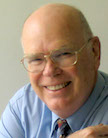Biblical Worldview Conferences
by Mark R. Harrington,
from San Antonio, Texas USA
from San Antonio, Texas USA
What are Biblical Worldview Conferences? A worldview is how we view and respond to the world based on our beliefs. A Biblical Worldview is only possible where the Bible is upheld as supremely authoritative and in which it is accurately taught, grounding beliefs in truth. Thus, a Biblical Worldview Conference is a tool among various other outreach tools to engage our community and society with biblical truth with a number of potential benefits for congregations.
What are the benefits? It helps the local congregation and Christians at-large to see how culture contrasts with Christianity so they can be better prepared to defend and share their faith within their vocations. It helps attendees who are looking for a church home to consider ours because they can see a church that rightly understands the Word of God and its application to the world in which they live. It brings greater community awareness to the congregation and our distinctive confessional faith. It also builds invaluable networking with confessional Lutherans locally and nationally. Finally and most importantly, Law and Gospel are set forth, showing us our utmost need for the only Savior Jesus.
Why such a format for outreach? It allows a congregation to engage larger groups of people at one time and lends an environment for people to talk between and after sessions. It challenges people to compare the biblical worldview with their own. Finally, it provides opportunities for follow-up with conference attendees, deals with the pressing cultural issues of today, and is evangelistic in nature.
An example of a lasting relationship as a result of our previous conference is a serviceman from Del Rio who was encouraged to take root in God's Word and Christ's work for us, as compared to "self-focused Christianity." He has been comforted, equipped, and more stabilized in his Christian life. He has visited us periodically even though stationed several hours away and maintains a warm ongoing dialogue with us.
Lastly, it must be a congregational effort to support. Since there are more aspects involving preparation, planning, coordination, budgeting, promoting, and logistics, I would encourage questions or comments.
Here is information about the conference just past.
Social Media and Church
by Curtis Bull,
from San Antonio, Texas USA
from San Antonio, Texas USA
Social media has a negative connotation when we hear it. It brings up thoughts of "look at what I made," "look at what I did," "look who I'm dating," "look who I met," ETC., ETC., ETC. Or maybe thoughts of time wasted sitting in front of a computer, tablet, laptop, or mobile device. It gets annoying. But what if we could make that negative into a positive and use that resource for the spreading of God's Word and increasing member involvement?
Social media sites like Facebook, Twitter, Tumblr, and InstaGram don't really seem to fit into what most people think of when you mention the word "church." Yet social media sites have become the single fastest way to get information out to the online world. Almost every adult has a smart phone and an account on at least one of these sites. Why can't a church take advantage of that? What is keeping a member or pastor that has a Facebook page or Twitter account from creating the same for the church? I did exactly that on Facebook for our church.
While I am the primary administrator, I have added additional members as administrators so they can post and share items to the page representing the congregation, not just people posting things. This is also a way to get the younger members of the church involved in evangelism. One of our young ladies enjoys the Word of God and landscape pictures. She puts the two together and posts them. Several of our Facebook page administrators follow online some insightful and sound confessional Lutherans, like Jonathan Fisk, Chris Rosebrough, and Issues, Etc. and they share items from them, along with posts from our synod and the WELS.
One of the single most important aspects of a Facebook page is to have "LIKES" or followers. Not all of your followers have to be members or vice versa. We have more followers than members. The key here is to post items that will make your followers want to share them. Each "share" shows where it comes from thus inviting more people to look at the page and become followers and maybe, Lord willing, even members. Remember, do not expect every follower to come through your doors. That is an unrealistic expectation. God's Word encourages us to spread His Word to the masses. Our job is not to convert, just to spread. The work of the Holy Spirit is to convert.
Here is our Facebook page
Website for Church
by Curtis Bull,
from San Antonio, Texas USA
from San Antonio, Texas USA
Do you have a website? What's the address? What's on your website? Can I email you from your website? These questions and more have been known to bring on thoughts of crippling fear to any number of small churches regardless of affiliation. Is having a website a good thing? It certainly can be. What can keep it from being a good thing? Lack of updates, lack of information, and lack of who or what it is about.
Almost every company, corporation, and organization has a website. What sets the great ones apart from the good ones? What sets the good ones apart from the bad ones? What brings people to your site? A website can be a very good thing to have. But a bad website is worse than no website. Updating a site is the one thing that keeps it from falling into the bad category. This is why corporations spend tens of thousands of dollars every year on a website. A great site that becomes stagnant will quickly fall off the top search engines and fall into the dreaded bad category. By having regular updates, the major search engines will take notice and crawl your site more often looking for new content. This is called SEO (Search Engine Optimization).
There are many things that go into SEO. One is links from outside websites like social media. Search engines see the traffic going from site to site and take notice in case they are missing something. Keeping your site updated and fresh keeps the search engines and regular visitors coming back. Depending on your hosting company, you may be able to get statistics on how well your site is doing, including how long people are on your site, how many times they visit, etc. All this goes into SEO.
Having a website is a major undertaking. The initial setting up is probably the hardest. You have to come up with the content, pictures, format, and decide on the layout. My recommendation for a successful church website is to have information about who your church is, what your church believes, what affiliation your church has with other religious groups, and you can't forget your service times and location. A church website is something that you can play with to find the best look and format. If you have an established website, don't be afraid to make major changes or do something outrageous like put weekly video sermons up.
Here is our website.
Halftime Hope: God Loves Sluts
by Dan Oberer
from Farmington, Minnesota USA
In an effort to get the Gospel out in an effective way to this society we studied where people are and how we can reach them in a way that they will take time to listen. As a result we came up with a weekly video devotion which we call, "Halftime Hope." The name is meant to convey two things — that it is delivered halfway through the viewer's busy week and, like the halftime of a sporting event, meant to refresh and renew with the Gospel — God's Hope.
Four key goals are focused on each week.
- It needs to be as short and to the point as possible. People, at work or at their busy home, do not have time to watch a full sermon, so the goal is to get in and get out as quickly as possible. Usually anything over seven minutes is considered too long and nothing is considered too short.
- It needs to be both professional and real. The "professionalness" comes in with the introduction and conclusion (both done by a BLC grad) while the "real" aspect comes in the fact that my messages are not scripted entirely, not perfectly delivered, and the lighting is not perfect. Coming off too slick and polished is a detriment to the realness of this. To put it another way, we want to convey the same message during a Halftime Hope that you would get if you stopped me on the street.
- In the message no Bible knowledge is assumed. When we introduce people we never assume you know which Joseph we are speaking about or which John. All people are introduced and, when appropriate, the Biblical scene is told in story form. The goal for this is for people to understand the Bible at their level — usually entry level.
- The title needs to be captivating. Instead of a title like "Halftime Hope, volume 12" or "Halftime Hope, October 3rd," the title is the theme of the message and the more eye catching the better. In the example video attached we could have entitled it "Volume 12" "May 21st" or "Rahab," but we used the more eye-catching title "God loves sluts." We live in a world where we are bombarded by advertising so anything eye catching (but still God-honoring) is used.
Here is the video.
SMS - a Canvassing Essential
by Tom Kuster
from New Ulm, Minnesota USA
For finding potential new members in a church neighborhood, technology will never replace good old fashioned door-knocking canvassing. But technology can certainly support these personal contact efforts.
Experienced canvassers all remember instances where they gain a welcome hearing in a home and a favorable response to their invitation to church, but then the people never show up. What to do? Going back and knocking on their door again seems too heavy-handed. Here is where technology can help. Enter SMS (text messaging).
All canvassers should be trained, when they get favorable receptions, how to ask gently for permission to send a text message, and obtain a phone number for doing that. A text reminder of the visit, and perhaps even a second if the first gets no response, might be the nudge that brings a prospect to church and to Jesus.
Here is what you need to incorporate a mobile phone texting component into your outreach:
Somebody to run it. This could be time consuming and you need someone other than the pastor or missionary willing to do it.
A strategy for collecting mobile phone numbers from prospects. This is worth discussing and pre-planning with your canvassing team. You want numbers only from people who are willing to accept text messages from you, and who understand what they are agreeing to. You don't want to annoy people, nor waste time sending unwanted messages.
A collection of text messages ready to send. You can keep these in a Word document or two, perhaps categorized in useful ways, like "first message" "encouraging Bible passages" "prayers" etc. Give each a number or some identifier so you can keep track of what was sent to whom. Consider the kinds of messages that could be sent. Samples:
reminder: "Worship service at Redeemer Lutheran Church starts tomorrow at 10 a.m."
encouragement: "Jesus is your Good Shepherd today all day long."
a Scripture verse: "I said, I will confess my transgressions to the Lord, and You forgave the iniquity of my sins. (Ps. 32.5)"
a prayer: "Jesus, Lamb of God, You laid down your life for me. Forgive my sins and help me to receive Your forgiveness with joy. Amen."
prayer request: "Pray for Joe M who is leaving for Iraq."
Keep the phone numbers on a computer in an Excel file, with any additional information about the person involved. You may already have a prospect file like this.
Simply use a phone that has an ample text message contract, and that will be identified by the receiver as coming from your church; send appropriate messages one at a time to appropriate people on an appropriate schedule. Keep track of sent messages (which and when) in your Excel file.
If you expect relatively few prospects on your list (a dozen or two), you can manage as follows:
If you anticipate a much larger list of phone numbers, you might want to move up to a more elaborate system. FrontlineSMS offers free software, developed for economic development purposes in Africa and used for many years by Evangelical groups there, that makes it easier to manage large and multiple lists of phone numbers, and enables sending messages to many phones at the same time. Computer Hope lists some other options. Readers of this conference session should leave other suggestions in the comments.
With this larger system, you might have to spend some money. The software can be free, but you need an adequate text message contract with your phone provider.




Discussion